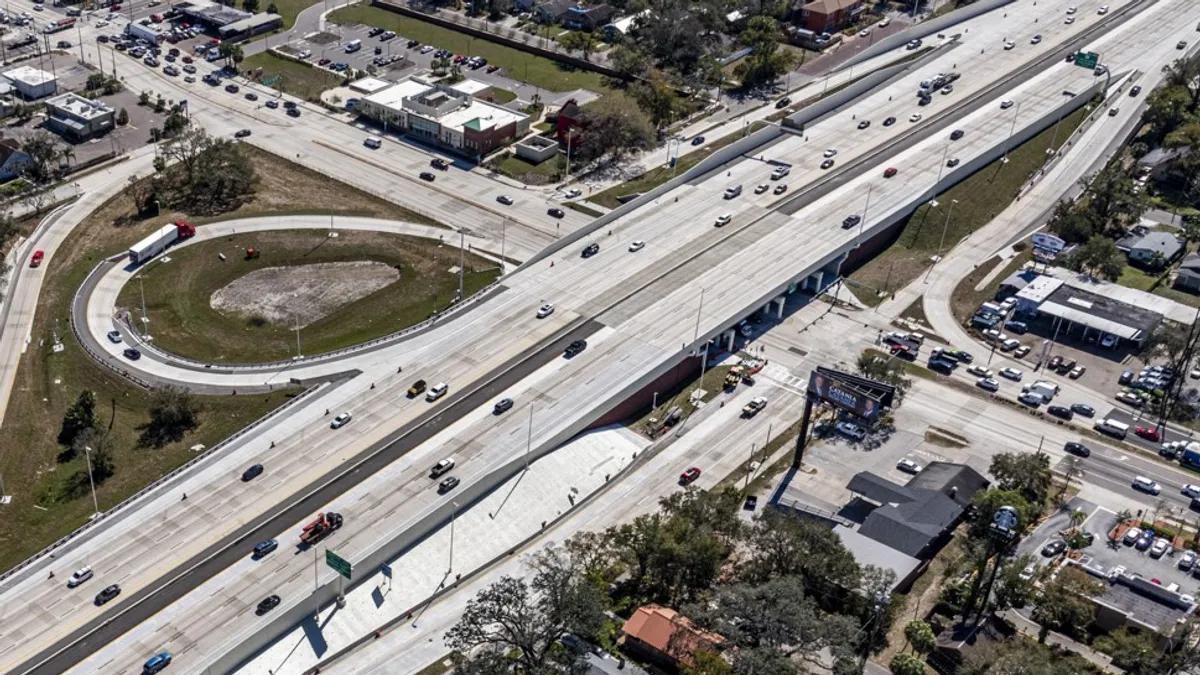While all eyes are on the National Transportation Board (NTSB), awaiting its final determination as to the cause of the deadly March 2018 pedestrian bridge collapse on Miami's Florida International University campus, another federal agency, OSHA, has come to its own conclusions about who bears responsibility for the tragic event.
OSHA, as the Department of Labor's lead workplace safety enforcement arm, was on site immediately after the collapse. Six months later, it cited five contractors — including Figg Bridge Engineers and Magnum Construction Management, formerly known as Munilla Construction Management (MCM) — with violations such as allowing employees to work on the bridge after cracks had been observed and failing to provide adequate fall arrest systems. NTSB and Florida DOT records and photographs indicate that small cracks were visible in the bridge, which was built offsite, prior to installation. The cracks reportedly grew as the span was trucked to the site and set in place.
But where the NTSB has yet to draw final conclusions as to the cause of the collapse, OSHA's Office of Engineering Services (OES) did not hold back in a new report that has laid the lion's share of the blame on Figg.
Figg employee Denney Pate was the engineer of record for the project, and Figg designed the bridge. The OES found that the cracks on the bridge contributed to the collapse and that the cracks were a result of bridge design errors. In fact, the OES said the "magnitude of the cracks" were such that the street below, where most of the fatalities and injuries occurred when the bridge fell, should have been closed to traffic and the bridge shored up in several areas until corrective measures could be taken.
The agency also determined that after observing the cracks during an inspection in the hours before the collapse, Pate and Figg should have known the bridge was not stable and, again, should have ordered the structure shored up and traffic on the street below shut down. Instead, the OES said Figg instructed that post-tensioning bars be re-tensioned, which was the activity taking place at the time of the collapse.
During a meeting on the morning of the collapse, after having evaluated the cracks for two days, Figg engineers could not figure out why the bridge's trusses were developing cracks. However, even given that fact, and with other project participants advising Figg that the cracks were growing in length each day, the engineering firm's representatives stated more than once that they did not present a safety concern. Pate, according to The Miami Herald, left a voicemail message for the FDOT a few days before the collapse stating that cracks in the bridge were not a safety issue.
Pate's evaluations of the cracks and his directive to re-tension the post-tensioning bars of diagonal member 11, located at the north end of the bridge where cracks were observed and where the bridge is presumed to have failed, were not part of the original design, according to the OES, and should have been subject to peer review by the firm Figg hired as an independent peer consultant, Louis Berger Group.
However, Figg, according to Berger, hired the company only to conduct a final review of the completed bridge structure in violation of FDOT regulations, which require a peer review at 30%, 60% and 90% completion as well. In its report, the OES said that if Berger had made interim inspections, it's possible that the firm would have picked up structural deficiencies, thereby potentially avoiding the collapse. Given that Berger did not conduct peer reviews after each phase of construction, the OES said Figg should have taken extra measures to ensure the bridge's structural integrity.
The OES added Figg should have known the non-redundant structure of the bridge design meant that a failure of the cracked diagonal member 11 could bring the span down.
But Figg was not the only player OES took to task.
The OES said MCM's onsite supervisors and quality control personnel knew the cracks were growing in size and should have called Figg on its statements to the contrary. The agency also criticized MCM for not exercising its own judgment and shutting down access to the street below the bridge until the cause of the cracks could be determined.
The OES also pointed to Networking Engineering Services Inc. dba Bolton Perez and Associates Inc. (BPA), which served as FIU's construction engineer and inspector (CEI) on the project. Like MCM, BPA was obligated to exercise its own judgment in helping to deliver a structurally sound bridge that met FIU and FDOT requirements. However, like other project participants and in a breach of its responsibility, BPA did not recognize that the extensive cracking posed a structural threat that would lead to collapse.
In its report, the agency also admonished Berger for not complying with the provisions of the FDOT peer review process.
So what's next?
Given that the OES report is based on a thorough inspection of all the project documents and extensive interviews and analyses, it could give a glimpse of what the final NTSB report will look like.
In addition, having an agency like OSHA place blame will most certainly give those who have filed personal injury and other lawsuits against the contractors involved in the project some extra ammunition. Bridge-related claims have already forced MCM into bankruptcy.
Perhaps most importantly, though, the report will give the families of the one worker and five other individuals killed that day some answers.




















